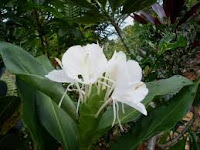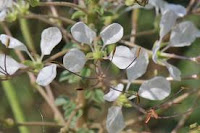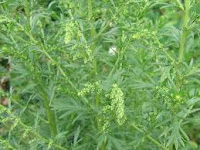The cancer bush is indigenous to South Africa and has been use for centuries in traditional systems of medicines, of the native peoples and the European colonists and their descendants. It is also grown around the world as an ornamental, and looks a little like the firecracker plant.
It is a member of the Leguminoseae or Fabaceae family and so is related to the pongam tree, the lead tree or ipil-ipil, the Indian Coral tree, the Monkey Pod tree, the tree from which we get Gum Tragacanth or gond katira, jhand the mesquite tree, dhak or Flame of the forest tree, the Pacific teak tree, the ashoka tree (Saraca indica), European laburnum, amaltas, the Indian laburnum, the Burmese rosewood tree, lupins, indigo, field restharrow, carob, melilot or sweet clover, milk vetch, the hyacinth bean, alfalfa, the butterfly pea, peas, green beans, chickpeas, borlotti beans and lentils just to name a few of its relatives. Now it is in the Papilionidaceae family. There are five species of Sutherlandia that we currently know of, all native to South Africa.
The name Sutherlandia honours the Scottish botanist, James Sutherland (c.1639-1719) who was the first superintendent of the Edinburgh Botanic Garden
The plant has been used to treat a vast array of diseases, ranging from the common cold to cancer, T.B. and HIV/AIDS. Traditionally it has been used in decoctions to wash wounds, and as an eyewash as well as to reduce the high temperatures of fevers. The early colonists from Europe used it for chicken pox, stomach problems and internal cancers. It is considered to be good for “female complaints’ both for the menopause and for menstruation. It is said to be good to treat peptic ulcers, for liver problems, diarrhoea and dysentery, varicose veins, appetite and digestion, diabetes, stress, as a blood purifier and to boost the immune system.
It is considered an adaptogen as are Eleuthero, American ginseng and rose root, which means that over a period of time it will bring about changes in the body and enable it to better deal with emotional, mental and physical stress. It is believed to strengthen the whole body and act as a general tonic, especially boosting the actions of the immune system, thus enabling it to better deal with infection.
There is much anecdotal evidence to suggest that it improves a cancer, HIV/AIDS and T.B patient’s quality of life, as it appears to halt the wasting process which accompanies these diseases. However research is still underway to identify precisely how and why the plant works in the way it would seem to.
The cancer bush contains tannins, cardiac glycosides, amino acids, saponins or anthraquinones, and gamma aminobytric acid (GABA) has been isolated from the leaves, which is probably responsible for its stress-relieving and mood enhancing abilities. It also contains L-carnavanine which has antiviral, antifungal and anti-cancer properties. It also contains pinitol which has a positive effect on diabetes, and this substance may be responsible at least in part for the halting of the wasting process mentioned above. Research is ongoing into the novel triterpenoid glycosides which have also been isolated from the plant.
It has anti-inflammatory properties and is immunomodulatory and the phenolic compounds it contains are probably responsible for its antioxidant properties. (Fernandes A, Cromarty D, Albrecht C, Jansen van Rensburg C. “The antioxidant potential of Sutherlandia frutescens” Journal of Ethnopharmacology. 2004; Vol. 95: pp1-5.)
The San people call this plant “insisa” which means ‘one that dispels darkness’ which probably refers to its anti-depressant and mood enhancing properties. The Tswana people have been using this plant to treat gonorrhea and syphilis for centuries but there is no evidence that this works.
Clearly this is another plant which warrants further research if we are to utilize its apparent health benefits.
























































